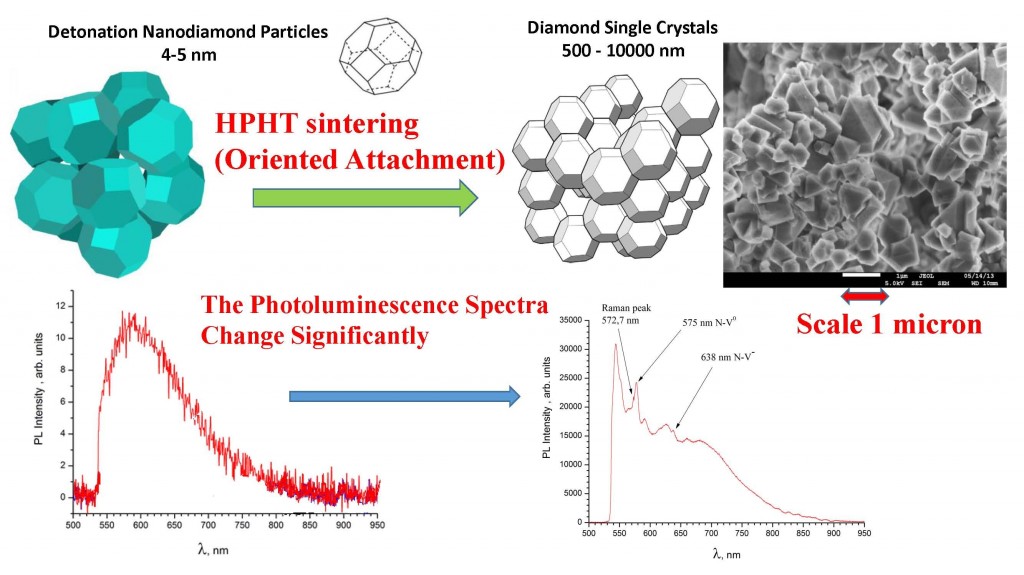NANOSYSTEMS: PHYSICS, CHEMISTRY, MATHEMATICS, 2018, 9 (1), P. 21–24
Chemical composition of surface and structure of defects in diamond single crystals produced from detonation nanodiamonds
S.V. Kidalov – Ioffe Institute, Polytechnicheskaya 26, St. Petersburg, 194021, Russia; Kidalov@mail.ioffe.ru
V.V. Shnitov – Ioffe Institute, Polytechnicheskaya 26, St. Petersburg, 194021, Russia
M.V. Baidakova – Ioffe Institute, Polytechnicheskaya 26, St. Petersburg, 194021, Russia
M. Brzhezinskaya – Helmholtz Zentrum Berlin Mat & Energie, D-12489 Berlin, Germany
A. T. Dideikin – Ioffe Institute, Polytechnicheskaya 26, St. Petersburg, 194021, Russia
M. S. Shestakov – Ioffe Institute, Polytechnicheskaya 26, St. Petersburg, 194021, Russia
D. A. Smirnov – Helmholtz Zentrum Berlin Mat & Energie, D-12489 Berlin, Germany
I. T. Serenkov – Ioffe Institute, Polytechnicheskaya 26, St. Petersburg, 194021, Russia
V. I. Sakharov – Ioffe Institute, Polytechnicheskaya 26, St. Petersburg, 194021, Russia
V.V. Sokolov – Ioffe Institute, Polytechnicheskaya 26, St. Petersburg, 194021, Russia
N. I. Tatarnikov – Ioffe Institute, Polytechnicheskaya 26, St. Petersburg, 194021, Russia
A.Ya. Vul – Ioffe Institute, Polytechnicheskaya 26, St. Petersburg, 194021, Russia
We present the results from our investigation of the structure and composition of microcrystalline diamonds obtained by sintering at high pressures and at high temperatures of detonation nanodiamond particles. Using XPS, XAS and photoluminescence spectroscopy, we found that the surface’s chemical composition and a defects structure of microcrystalline diamonds significantly differ from the initial detonation nanodiamonds. This indicates the essential transformation of structure and composition of initial detonation nanodiamonds particles during the formation of single crystals at high pressure and temperature.
Keywords: detonation nanodiamond, HPHT sintering, single crystal, XPS and XAS spectroscopy, photoluminescence, defects.
PACS 78.55.m, 78.70.g
DOI 10.17586/2220-8054-2018-9-1-21-24
